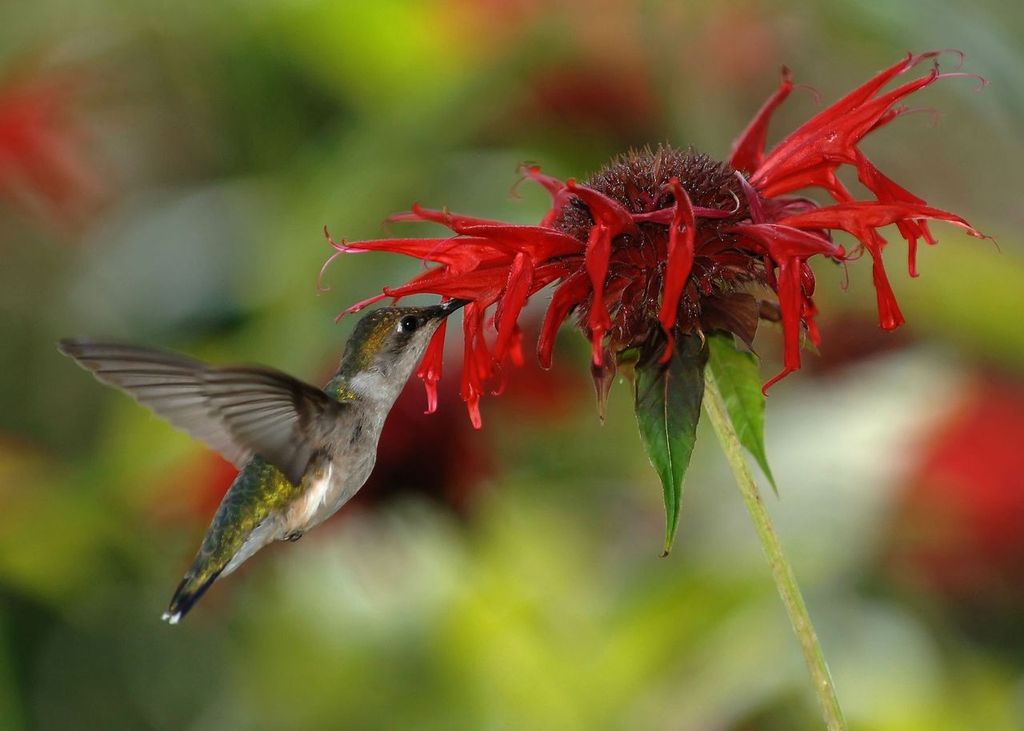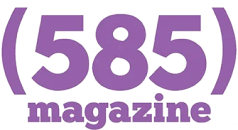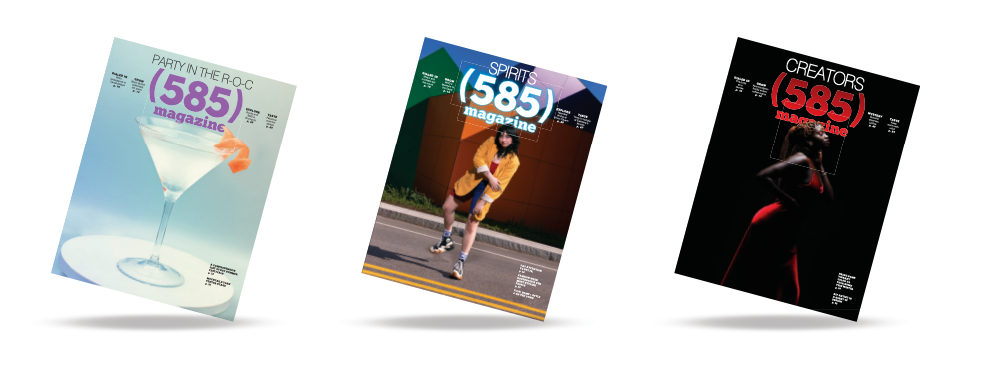
Hummingbirds are incredible little birds with amazing adaptations. During flight they beat their wings anywhere between seventy and 200 times per second, which gives off the humming sound they are named for. They can hover, fly backwards and straight up and down, and are even known to make somersaults in the air. Their long bills are perfect for drinking nectar from deep, tubular flowers, and they also eat insects. All hummingbird species are small, and the smallest bird in the world is the Bee Hummingbird, which is only two inches long.
The Eastern United States is home to one hummingbird species: the Ruby-throated Hummingbird. Ruby-throated Hummingbirds are Neotropical migrants, meaning make take long-distance migrations to their breeding grounds in the spring and summer and then migrate back down to their winter ranges in the fall. Each year these incredible migrators come back to upstate New York around the first week of May and by the end of September are all but gone from our area. This migration from Central America up north, sometimes into Canada, can be more than 2,000 miles long. On this migration some hummingbirds will fly directly over the Gulf of Mexico, which on its own can take up to twenty-four hours. While they are here, hummingbirds can be attracted to backyards with feeders, plants, nesting material, and water.
Hummingbirds can be easy to attract and will eagerly visit hummingbird feeders in the spring when they need a lot of calories to replace those they have burned off from their miles of migration. In the fall we also see an uptick of hummingbirds visiting feeders when they are getting ready to migrate back down south. Hummingbird nectar can be purchased, or you can make your own. The recipe for hummingbird nectar is one part sugar to four parts water. Use white, granulated sugar and mix it with boiling water. There is no need to add any dyes, as it’s not known if the dyes can harm the hummingbirds. Hummingbird nectar can be put in a variety of feeders. Having one that is easy to take apart and clean is key to making sure the nectar is always fresh and healthy for the birds. A feeder that is red in color will help draw in hummingbirds, as they are attracted to the color red. These little birds are territorial and will actively defend food sources! The key to getting more hummingbirds in your yard is to put up multiple feeders that are out of sight of each other.
Hummingbirds also love plants, especially those with long, red, tubular flowers Some enticing native species include the cardinal flower (Lobelia cardinalis), bee balm (Monarda didyma), wild columbine (Aquilegia canadensis), coral honeysuckle (Lonicera sempervirens), trumpet vine (Campsis radicans) and phlox (Phlox maculata.) Other hummingbird favorites that can readily be found in garden centers include: salvia, hyssop, crocosmia, fuchsia, and gladiolus. Although they are now commercially available, hummingbirds will not use any kind of hummingbird “house” you may see on the market. Hummingbirds are not cavity nesters, and they will build their own nest in a tree. Ruby-throated Hummingbirds will build a tiny nest where they usually lay two eggs. They tend to build a nest high up in a deciduous tree, usually between ten and forty feet high, so nests can be hard to see. Often hummingbirds come back to the same area they were born to build a nest. The nest is built from soft, downy plant fibers, spider webs, and lichen. While most of the material hummingbirds use to build their nests come from plants and spider webs, you can provide them with natural cotton to help supplement their nest building. The female will sit on her eggs for about two weeks until they hatch, and once hatched they will be in the nest for about three weeks and then they are ready to go out into the world.
Water is another way to attract hummingbirds. They usually do not splash around in birdbaths like larger birds will, but they do need water to survive. The best way to attract them is with moving water, especially with a fountain or a mister. Misters are nozzles that can be attached to a hose that, when running, will create a fine mist that the hummingbirds can fly through. Fountains can also create this misting feature. Any birdbath can be turned into a fountain feature with a solar fountain insert, which will recirculate the water in the bath. We often hear stories of hummingbirds taking advantage of a sprinkler to fly through its mist in the summer months.
Hummingbirds are called flying jewels, and for good reason. The emerald-green coloration of the Ruby-throated Hummingbird lights up the garden when the sun hits their plumage in a spectacular way. The males have ruby-colored throats, which also give the garden a beautiful pop of color. These birds will be here all summer long, and there are many different ways to attract them that it is easy to invite even just one to the garden.
Liz Magnanti is co-owner of the Bird House in Brighton, NY.
This article originally appeared in the July/August 2025 issue of Upstate Gardeners’ Journal.
Views: 1






